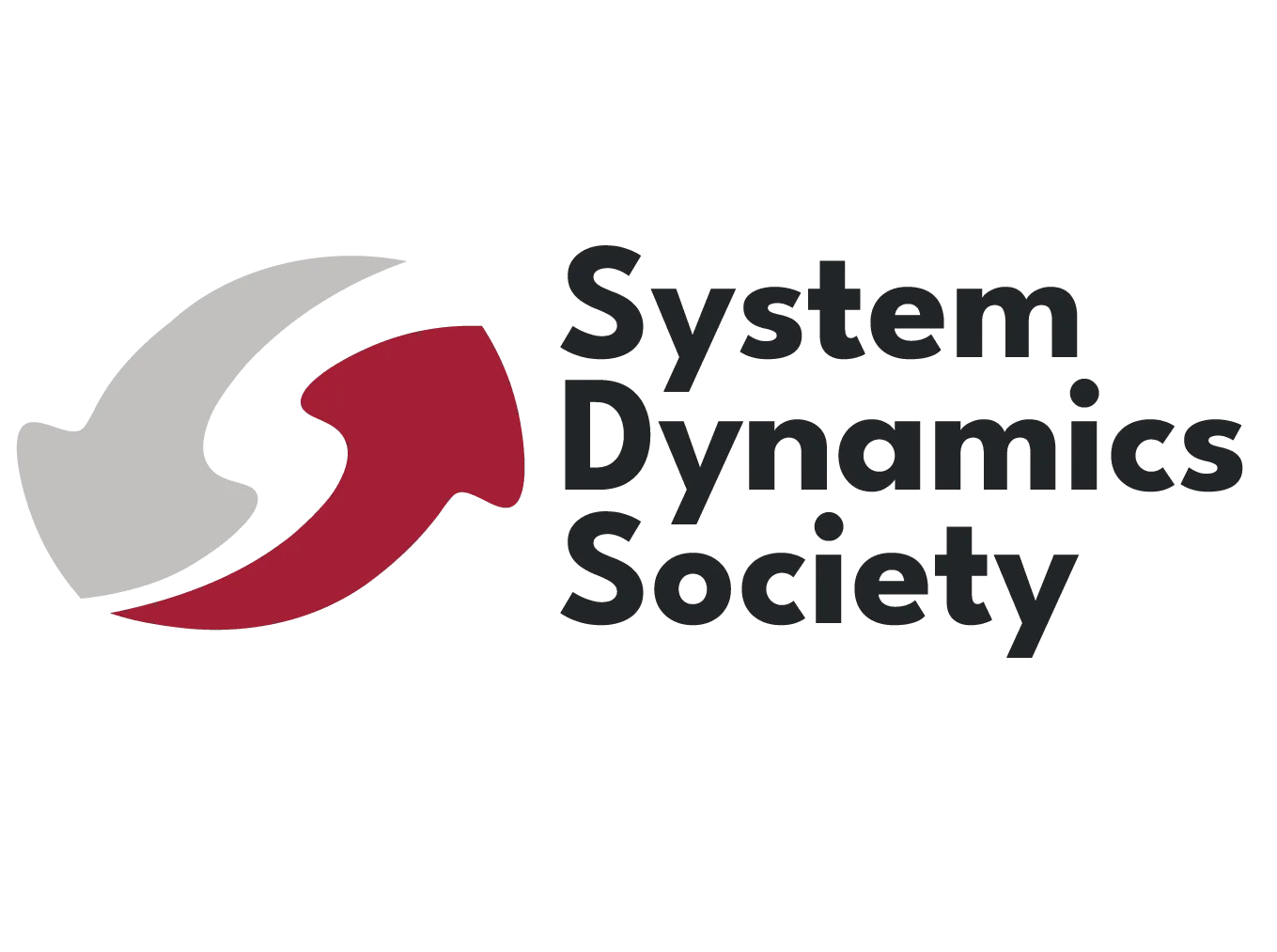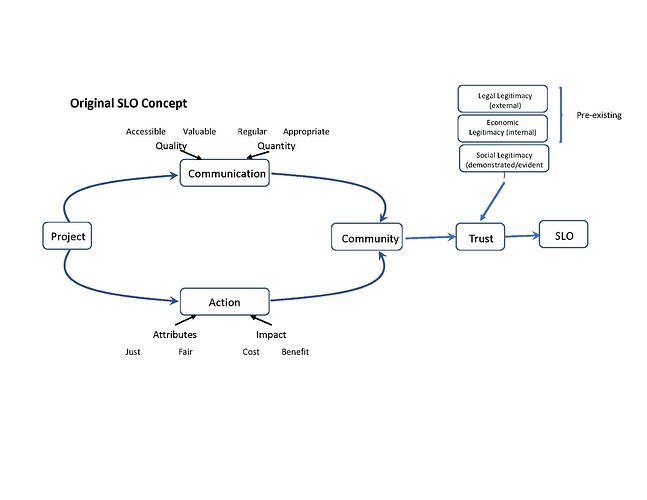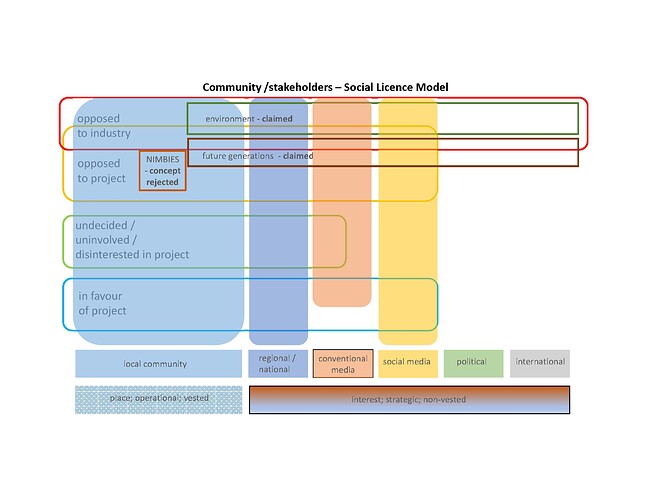Good day
I am new to system dynamics and came here because I am trying to model community interactions relating to a contentious project. SO this is non-mathematical, non-engineering but I still believe that there is a system of sorts because, for example, increasing communication between the protagonists could reduce the animosity between them. Does anyone have any ideas as to where I can find literature or ANYTHING that would help me try to build such a model?
Please
Desperate PhD student
Douglas Taylor
Hi Douglas, here are a few resources that may touch on your issue:
Community Transformation · Well Being Trust
Healing The Nation: A Policy Guide
Stewards' Resources - Rethink Health
Explore the Springboard
I hope this helps a bit! Jack Homer
What is the structure of the system in which the community is operating?
Model the structure of the system.
Community interactions involve hidden assumptions, misinformation, disinformation, fear and fallacies. Without a structure for communication, emotions take over and lead to what you labeled as "animosity ". In order to model anything, you need to have a structure. too many times people rely on words alone without understanding that people’s behavior results from the structure of the system in which they are operating.
What is the purpose of the model? Making a community model without a well defined and preferably not to general purpose will be horribly difficult with to many possible structures, influences and parameter values which will make it impossible to analyze. It will be a systemic model that will try to describe something impossible to describe being to general, not precise enough and not motivated. JJ
sorry for the miisspelling: too general, too many possible and too general. JJ
Hi there Douglas,
Welcome to the forum! Good to hear you’re trying to model a complex problem. Let me try to offer a few ideas that may help.
There is a large amount of business and academic literature on group cooperation, conflict, bargaining, and so on. If you did the normal literature search, all you would be trying to do is find the closest matches for your situation. This might be productive if you found a close match. But that is unlikely, since there are thousands of possible social system variables involved. Which variables should you be checking for a close match? That’s hard to say. This would be an intuitive approach.
As you suggest, perhaps system dynamics can be used to “model community actions relating to a contentious project.” You offer one solution hypothesis, that “increasing communication between the protagonists could reduce the animosity between them.” This implies you suspect that a major cause of contention is a low level of communication between groups.
That in turn suggests that one popular approach to modeling, group model building, would possibly help here.
I’ve just done a Google Scholar search, which you can also do, on ‘ “system dynamics” group modeling’. The fifth hit is on “Group model building and community-based system dynamics process”. This covers a potentially very useful topic: “Community-based system dynamics (CBSD) is a participatory method for involving communities in the process of understanding and changing systems from the endogenous or feedback perspective of system dynamics.” More sources dealing with group modeling are listed in search results. Study of these, and the sources they cite and are cited by, would, I suspect, quickly lead to lots of ideas for how you could “build such a model.”
If this doesn’t work to your satisfaction, let me suggest a less popular approach, one seldom used in system dynamics modeling. This is root cause analysis, a powerful business tool for solving any causal problem.
My background is in business management and consulting, rather than academia. When it comes to problem solving, my system dynamics approach has centered on using root cause analysis to drive model construction. I reported on this topic in a 2010 paper, Change Resistance as the Crux of the Environmental Sustainability Problem.
It happens that I’m just now working on a follow up paper to further demonstrate how root cause analysis and system dynamics can be applied to difficult large-scale social problems, using sustainability as an example. A paper on this topic, Adding a change resistance layer to integrated system models using root cause analysis and problem decomposition, has been submitted to our up-coming 2021 conference and is here. This paper is relevant to your question because it deals with change resistance. Contention between groups is a form of change resistance, as each side resists the opinions of the other side(s). Often the contentious discourse involves rationalizations and outright falsehoods, where one side attempts to get their way by various forms of manipulation and deception. This of course may or may not be present in your case.
To use root cause analysis on your problem, see page 8 of the conference paper. Become familiar with how the social force diagram in Figure 2 works. More examples may be found here.
Then sketch out a diagram for your problem, starting with the superficial layer. This would contain solutions to your problem that have failed. If it’s a contentious project, some approaches to achieving consensus have already failed. It’s vitally important to understand WHY they have failed first, before attempting to analyze the fundamental layer. That’s because by analyzing the superficial layer first, you find the intermediate cause(s). What this is provides a large clue as to what the root cause(s) might be, and you are more likely to find the correct main root cause(s) quickly. That’s why I’ve found that this approach leads to powerful causal insights much more quickly and reliably than verbal descriptions or causal loop diagramming, for difficult problems where solutions have already failed.
Note that you may need more than the two layers used in the example diagram in Figure 2. If any feedback loops are playing a large role, arrows and additional nodes can be added to the diagram to indicate the loops. The approach is flexible.
Once you’ve built your root cause analysis diagram, you have your root cause hypothesis. You can now proceed to create your dynamic hypothesis with causal loop diagrams or a roughed-out system dynamics model, or it may already be in your social force diagram if you’ve added one or more feedback loops.
Hope this helps! Please don’t hesitate to ask further questions. That’s what the System Dynamics Society is here for.
Thanks so much, Jack.
I shall “deep dive” and see where it takes me.
All the best.
Douglas
Hi Richard
Thanks for your insight. Yes, I think the hidden assumptions, etc. make this quite difficult. If you see my reply to Jack Harich (Register) below you will see what I have done/tried to do. And, perhaps, rather than repeat myself I’ll leave it at that.
Nonetheless, your points made all resonate with me. What I am trying to understand is what are the drivers in this case and how do I improve/change matters.
All the best
Douglas
Hi Jean-Jacques. Thanks for your response. As you will see below I am trying to map the relationships within a community and between a community and a project/company. As you rightly point out, it is horribly difficult, especially as I come to Systems Dynamics as a complete novice!
All the best
Douglas
Hi Douglas.
If you are new to SD, I would recommend to becoming more familiar with how SD can help you practically. Understanding this will take some time, and you must be prepared for it. SD is time consuming and you must evaluate the utility of using it. SD is about a mathematical representation of a situation that is generally represented qualitatively. To do that correctly one must train oneself to do it, starting with easy problems at first. Start by writing in English an extremely simplified description of your problem, preferably in one phrase, and with a maximum of two lines and then try to make a model with it. Once the model is built, use it and see how well it represents the original qualitative description. It will probably not be satisfactory and having well understood the differences between the two representations, correct either the qualitative description or the model and start using again the model etc…
Exemple: the example is studying a misunderstanding between two groups of people. The qualitative description is: the understanding between the groups increases when the people meet but decreases with the time.
This is a very simplified description that ignores many factors but this is roughly true up to a point.
You must represent the understanding as a stock that increases with the rate of meetings, and has a rate of decrease. You must set a time step, a rate of meeting, a rate for the decrease, a unit for the understanding, which is intangible but that can be related to tangible data for instance, the number of questions among a set of questions, that the groups agree on. Spend a lot of time comparing the qualitative and quantitative description, vary the time step and the rates and once well mastered, start adding some more factors, one by one, repeating the process.
If you use Vensim for instance, use the synthesim.
JJ
The quality of an SD study is much depending on its creativity. One way to increase the creativity is to start with different starting definitions and work on them separately, building a model, comparing the model outputs with the qualitative definition etc… Once several different descriptions are studied, choose one that you prefer and start improving it and build a model and make the comparisons like the first step. But here again from that starting description, try different simple modifications and study them one by one, and after that choose one modification, etc…, making different simple modifications at each step. This of course is time consuming, but it depends on how deep you want to make your study and the quality of the model built. There is no miracle, if you want good results you will have to pay the price in time spent. JJ
Doug:
As you probably noticed, there are several different approaches to the problem you mention and these have brought out a variety of views, I think. The question I would have is : what is your role in this problem?
Are you interested in it from a purely academic perspective… that is are you interested primarily in how people respond to this contentious project and how their views change over time, and you are an external observer wanting to describe the situation? Do you wish to describe a dynamic problem and how it evolves.
Or are you actively involved in wanting to change the situation, to be a catalyst for changing the dynamics of the system. Here you would be more involved with stakeholders, their positions and views and how those views might be changed. I would guess you might be in this category.
OR, as several here have suggested you might be more interested in using a model built in conjunction with stakeholders as a means of having everyone better describe and understand the situation, and each others needs, views and requirements. That is, are you moving toward a group model building intervention.
I agree that all these are related, but I believe that the resulting models, and certainly the modeling process, would be quite different… at least I think so.
Richard
Hi Douglas
Finally why are you desperate? JJ
Thank you all very much for your input. I have already looked up many of your recommended articles given consideration to your suggestions and shall take this further as I progress.
It has taken me little time to respond to you all because I have been trying to create the visuals/maps to give you some idea as to what I’m trying to achieve. To be honest, I know little about Systems Theory / Systems Dynamics (I completed a MOOC course on the subject), but it seems to me that this is one route I could be invaluable in trying to create a coherent explanation for some of the phenomena I have observed.
My PhD considers the social licence to operate (SLO) and this particular case is a contentious project. I’ve uploaded a diagram showing the Original SLO Concept, which is reasonably straightforward in that the promoters of the project communicate with the community and carry out a number of actions (exactly what is not important) and thereby earn the trust of the community. This coupled with the legitimacy of the project then earns the project the social licence to operate
.
In this particular situation, there were a number of community/stakeholder groups and I’ve tried to produce what essentially is a Venn diagram of these groups (also uploaded). So, for example, the local community comprises people in favour of the project, people who are undecided or disinterested, people who oppose the project and people who oppose the entire industry. These latter groups of opposition “parties” refute the fact that they are NIMBYs and have claimed to represent both the environment and future generations. Additional groups include regional or national interests, conventional media, social media, politicians and there is international interest.
Interactions between the community members and between the community and the project became very conflicted and as a result, I have created a Revised SLO Concept, and have uploaded my first version. Essentially not only was there a quite intense conflict between various community groupings, but those opposing the project also disrupted activities as well as mounting a substantial social media campaign against both the project and the industry.
I’m now trying to draw up some kind of system analysis incorporating my “Venn diagram” into this revised SLO concept. This is where I find myself - stuck!
Now, I have heard of, and read about, stocks and flows, but I am not quite sure how to incorporate those into my model. My sense is that Trust is the major “stock”, which increases or decreases depending on the inflow or outflow of communication and action. Legitimacy is also a prerequisite for Trust, so as legitimacy is eroded so is trust and/or the SLO.
Can I leave it there? Any advice/recommendations would be much appreciated.
Douglas, it’s no surprise this has become complicated for you, because community dynamics really are quite complicated. Here’s another link that might help you think about what you’re seeing: Optimal decision making in a dynamic model of community health | IEEE Conference Publication | IEEE Xplore
More broadly, I think you need more background in SD before you pursue modeling further. Even if you only want to remain at the level of diagrams and not simulation models, there are many pitfalls and ways to get things wrong. It’s a tricky dance among theory, evidence, and the need for both parsimony and usefulness. Those who have been involved in SD for decades are still learning the subtleties.
You should start by reading basic texts; perhaps best for beginners like yourself. is Donella Meadows’ book “Thinking in Systems” (Chelsea Green, 2008). There are many others, but that’s the most readable and helpful, I think. Also, you should check out the Learning resources at systemdynamics.org, and perhaps sign up for the one-on-one mentoring program, of which I am director. But you really should read the Meadows book before anything else. My two cents.



